Do you want to keep your vinyl floors in tip-top condition? Although this gorgeous flooring is hard-wearing, it requires regular gentle care and maintenance to retain its smooth texture and natural shine.
Water, chemicals, and abrasives are vinyl’s greatest enemies. That said, with the right tools, caring for your new floor will be a complete breeze.
In this guide, we will show you how to clean vinyl floors in any part of your home. You will also find some practical tips on maintaining the floors and keeping them in great shape for longer.
Let’s get started!
Table of Contents
Supplies You Will Need To Clean Vinyl Floors
WD-40
- Soft micro-fiber towel
- Apple cider vinegar
- Baking soda
- Distilled water
- Dishwashing powder
- Soft-bristled brush
- Mop
How To Clean Vinyl Floors
Ensure clean vinyl floors with these tips.
1. Sweep before you mop
Vinyl is very durable, but the smooth surface is prone to scratching, leaving the floor looking undesirable. Avoid leaving graze marks by first sweeping before mopping.
Use a soft-bristled broom or, even better, a dry mop to sweep away dust, debris, and hair. Be sure to sweep around furniture legs and underneath the furniture. Any hidden debris that gets blown out onto high traffic areas can cause subtle scratching that will be noticeable with time.
Once you have dust-free floors, you can go ahead and mop. Plain warm water and a mop are all you need if your floors are stain-free and generally well-maintained. Some washing detergent might be necessary for stained vinyl or older floors, as we’ll see below.
2. Cut grease with a dishwashing soap
Mix warm water and a few drops of dishing soap to clean the kitchen floor. Dishwashing soap will cut through the splatters of oil and grease in a busy kitchen.
Avoid scouring powders and products containing ammonia, as these might be too harsh for vinyl flooring. Instead, opt for a gentle soap that will neither damage the floor nor tarnish the floor with an unsightly film.
3. Use apple cider vinegar to remove grime
Apple cider vinegar is a powerful but and gentle cleanser. The acid lifts and loosens grime, making it easy to clean high traffic spots such as the entryway and kitchen, prone to getting dirty. Also, unlike soap, cider does not leave unsightly buildup marks.
Pour one cup of apple cider vinegar into a mopping bucket containing one gallon of warm water. As you mop, apply slight pressure on those particularly dirty spots. All along, keep the mop clean by regularly rinsing with clean, warm water.
4. Get rid of stubborn stains using baking powder
Spills should be cleaned immediately to avoid permanently staining the floor. Remove stubborn stains from sauces and juices by applying baking soda paste to the area. Rub gently but steadily until the stain lifts. Mop the spot using warm water and a bit of white vinegar to remove baking soda residue.
5. Clean inks using alcohol
Stains from marker pens, crayons, lipstick, ink, and dyes can be particularly difficult to get rid of with plain water and liquid soap. You need a more powerful cleanser such as an alcohol solvent to lift the stain.
It might be tempting to use a rough item such as steel wool to scrub the stain out, but this will cause irreversible damage to your vinyl floors.
The best option is to use a soft-bristled brush plus the alcohol solvent. Use the brush to apply a bit of the solvent and scrub the stained area gently.
6. Get rid of scuff marks using WD-40
Scratch marks on your floor are unsightly. Anything from furniture, shoes, pet paws to kids playing can leave scuff marks on the floor. Restore the sheen back on your floors using WD-40.
Spray the WD-40 cleaner on a soft towel and use it to wipe the affected area. Once you are done, clean up the WD-40 residue using a mixture of water and white vinegar.
7. Limit the amount of water you put on the floor
Vinyl is waterproof, but this doesn’t mean that it is indestructible. Water can seep in through the plank joints and cause irreversible damage. If this happens, you would be forced to replace the affected planks. If the damage extends too far, you might have to replace all or a portion of the floor.
Avoid costly damage to your floor by drying water spills as soon as they happen. Also, when mopping, be sure to wring out excess water as you go along.
8. Be diligent with your stain removal technique
There is a right and wrong way to clean stains. The right way is to start by cleaning the outer edges of the stain as you work your way toward the center. Keep using a clean part of the cloth to prevent the stain from spreading and growing bigger.
9. Rinse your floor
Rinsing helps to remove extra soap to avoid leaving a dull film on the floor. This might not be necessary if you have only used a moderate amount of soap. But, if your floor still feels sticky after that first mop, it is a good idea to give it a quick rinse. In a bucket, mix water with one cup of white vinegar and mop the floor to leave it super clean.
10. Let the floors air dry
If possible, open the windows to let in air that will dry the floors. Try as much as possible to stay away from the just-cleaned floors to avoid leaving footprints and creating a general mess.
Extended Tips For Vinyl Floor Maintenance
You should proactively care for your vinyl floors to minimize damage and extend their life. Here are some things to keep in mind to get the most from your floors:
11. Be careful with commercial cleaners
If you opt for a commercial floor cleaner, make sure it is suitable for your type of floor. Some products might be too harsh for vinyl and can cause scuffing and strip the planks or tiles’ natural luster. If possible, try not to use mop and shine products as they leave an unattractive film on the floor that only attracts more dirt. The best and safest way to clean vinyl flooring is with water and a gentle detergent.
12. Avoid applying no-wax vinyl flooring
If your vinyl flooring is labeled as no-wax, you should not apply any wax products to shine the floors. Instead, use a no-wax floor cleaner and adhere to the instructions on the product label.
Older floors may require waxing. In this case, apply the wax as needed and then clean the floor with warm water and a gentle detergent. Use just enough force to rub the dirt out of the floor but not to remove the wax. Rinse with clean water to avoid leaving a residue on the floor.
13. Use rags and mats to prevent scuffs
The best way to care for your floors is to minimize the amount of dirt that comes into contact with the floors in the first place. Your first line of defense should be a doormat at every entrance to keep dirt from being tracked into the house.
Sand, chemicals, and other outdoor debris will gradually scratch the floors, remove the sheen, and even cause yellowing—place rugs in high traffic areas such as along hallways and select spots in the kitchen.
14. Prevent damage by heavy items
Aside from water, chemicals, and debris, scratches from furniture can really damage the look of your floors. The good news is that you can prevent furniture scuffs by just being careful with the way you place and move furniture pieces across the floor.
Heavy items such as refrigerators and tables that don’t move often can dent the floor. Prevent permanent dings by installing safe feet on these items. Floor-friendly feet are softer and can withstand the weight of heavy furniture and appliances. Check for felt feet at your local home improvement store.
Avoid dragging furniture across the room, as this will leave unsightly scratch marks on your floors. To prevent this, lay plywood sheets on the parts of the floor where you plan to move the furniture. Then, move the furniture on top of the plywood sheet.
Extend the Life of Your Vinyl Floors With Proper Cleaning and Maintenance
Vinyl is an affordable yet stylish flooring option. It can stand up to years of use and abuse. But, to keep your floors in the best shape, regular cleaning and ongoing maintenance are necessary.
Fortunately, you do not need expensive equipment or products to clean vinyl floors. Easily available natural cleaners can aid in keeping your planks or tiles squeaky clean.
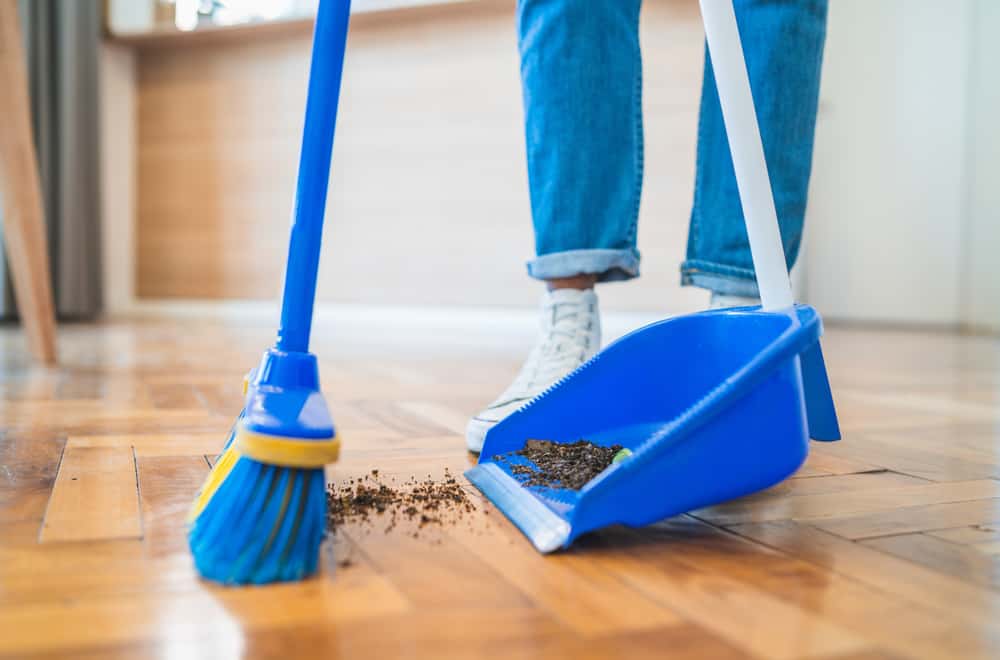
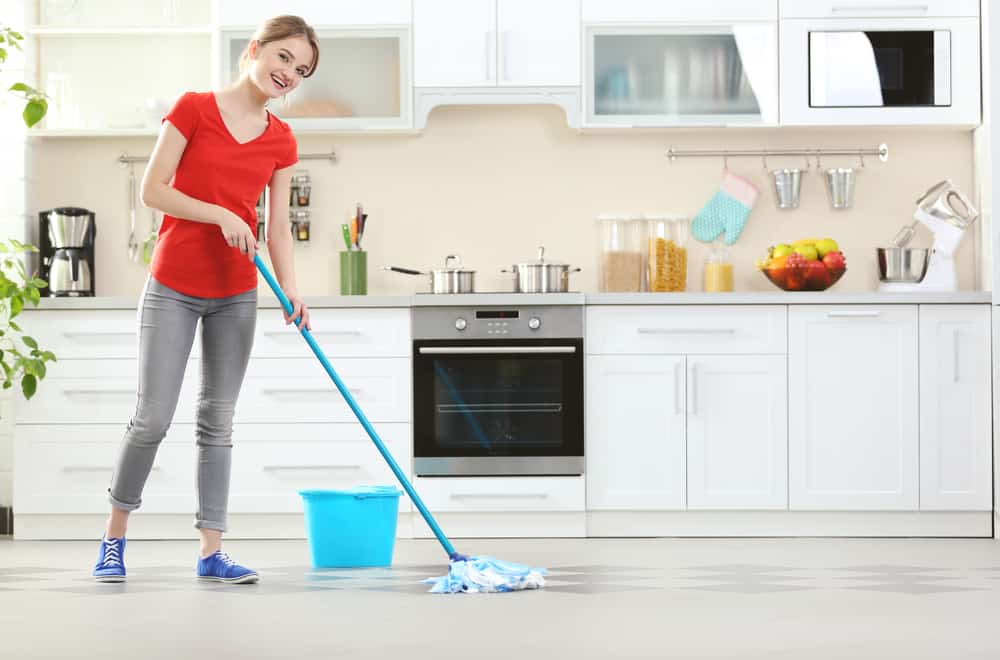

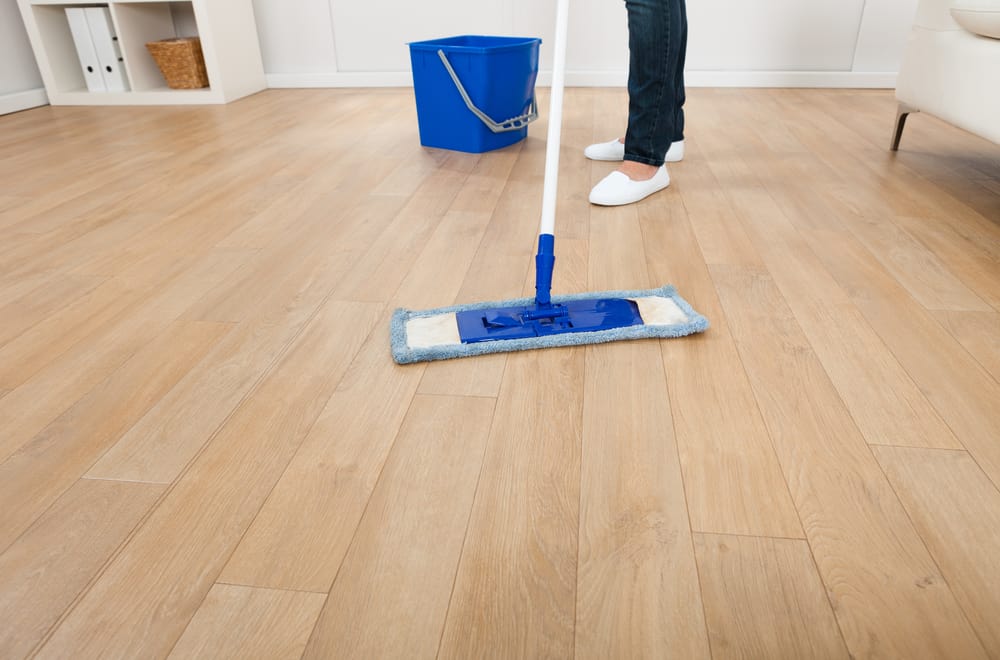
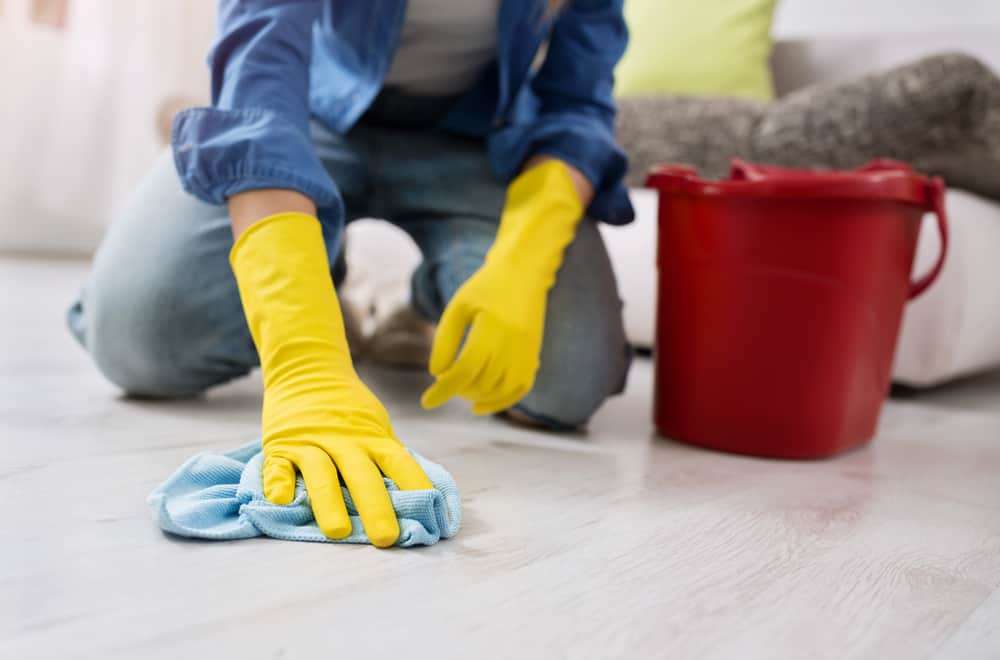
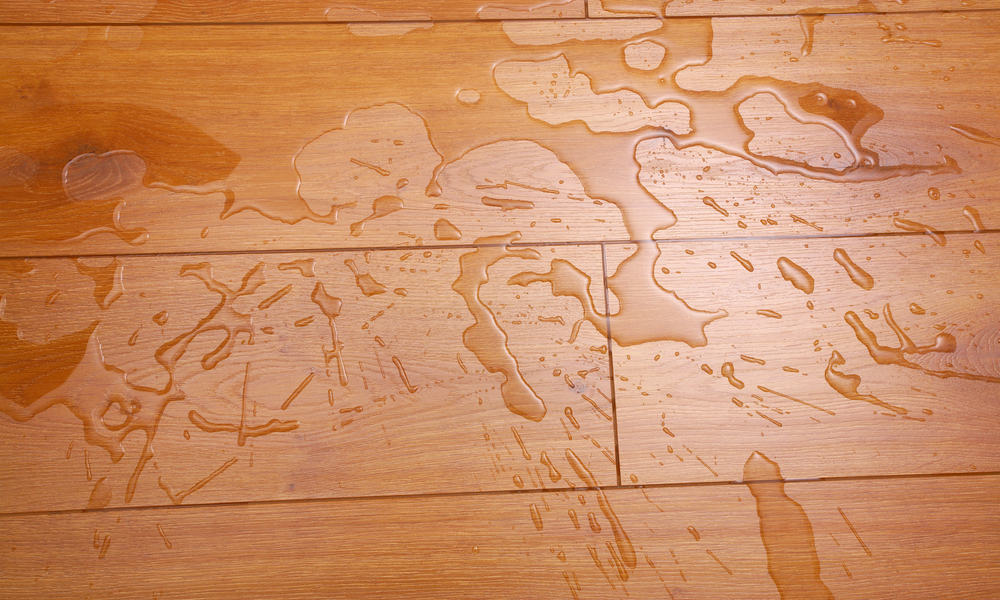

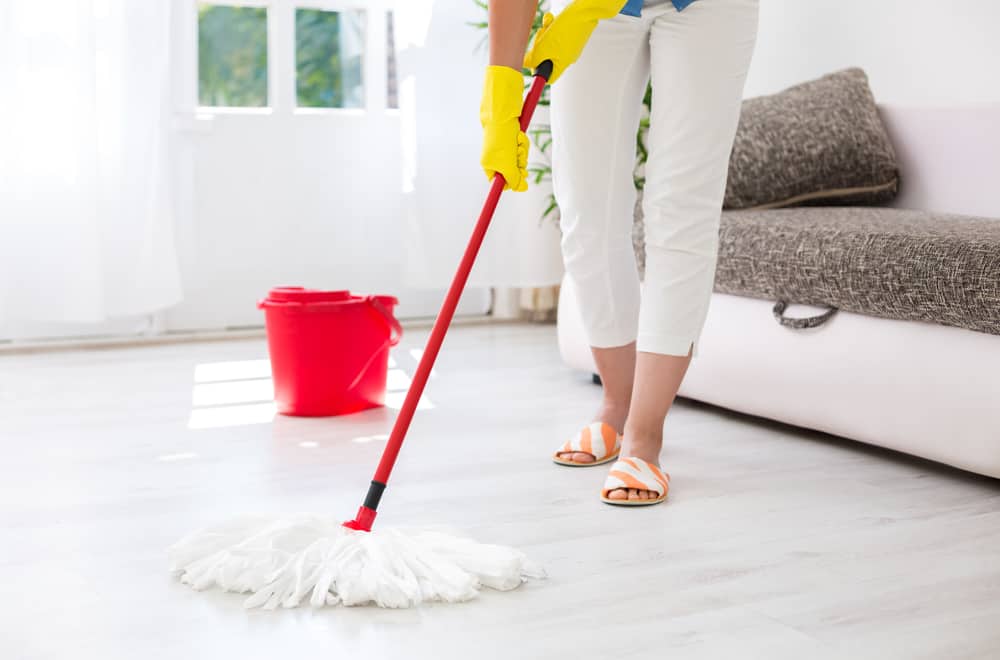

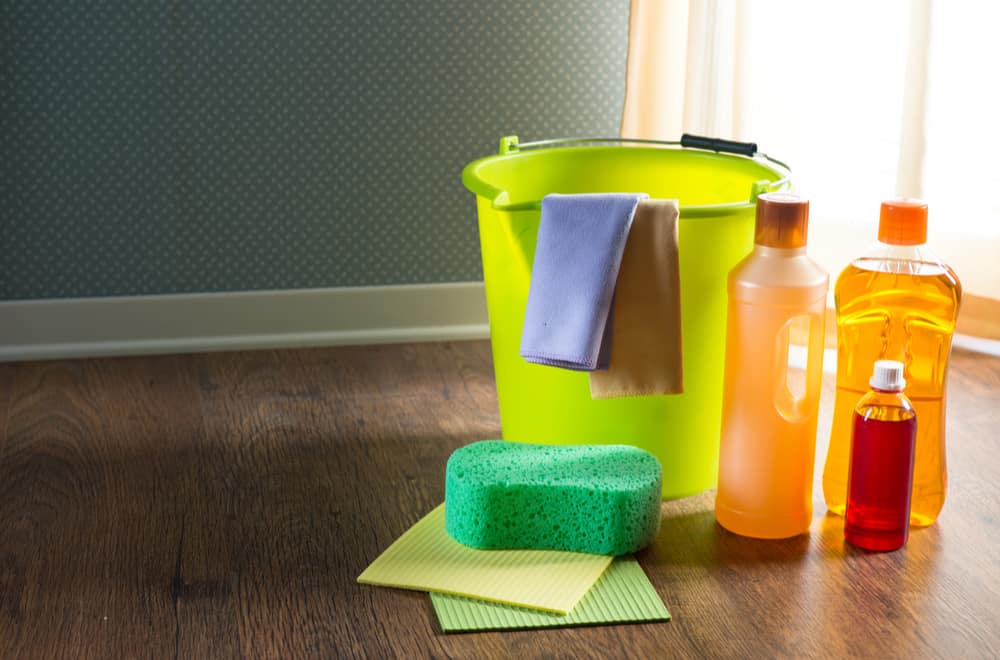
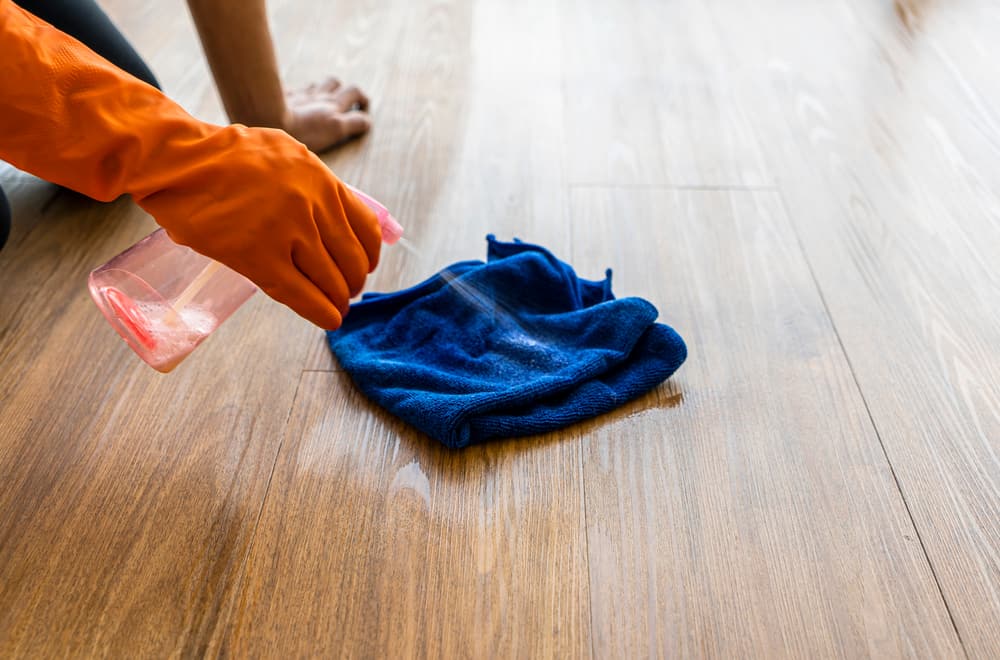

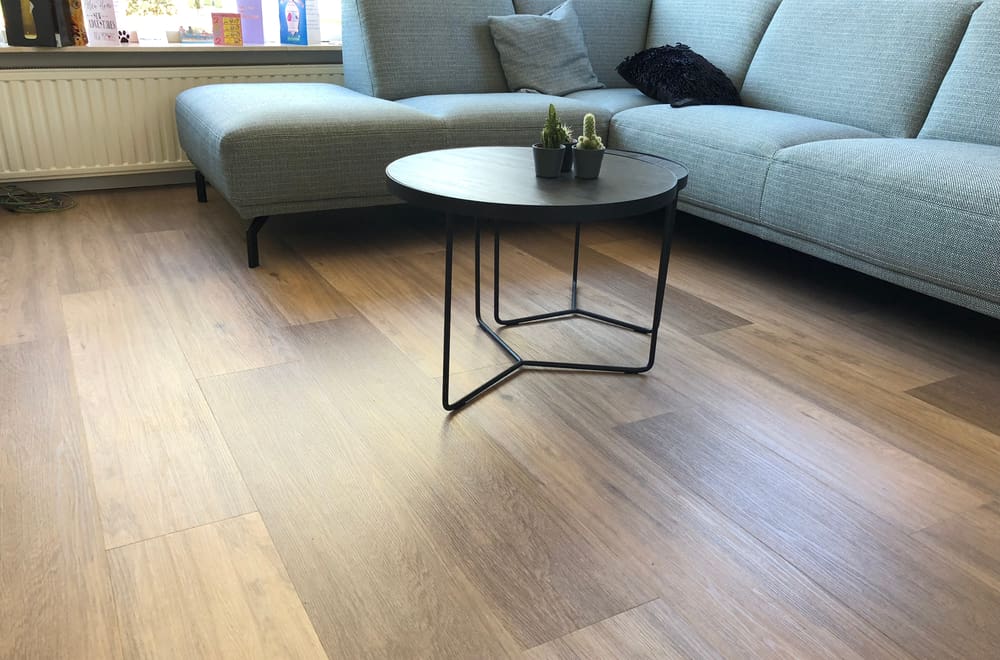
What is the best way to clean the floors to remove bacteria, like in areas of the bathroom?
Also, I read mixed reviews about steam cleaning my Duralux floors. What is recommended?